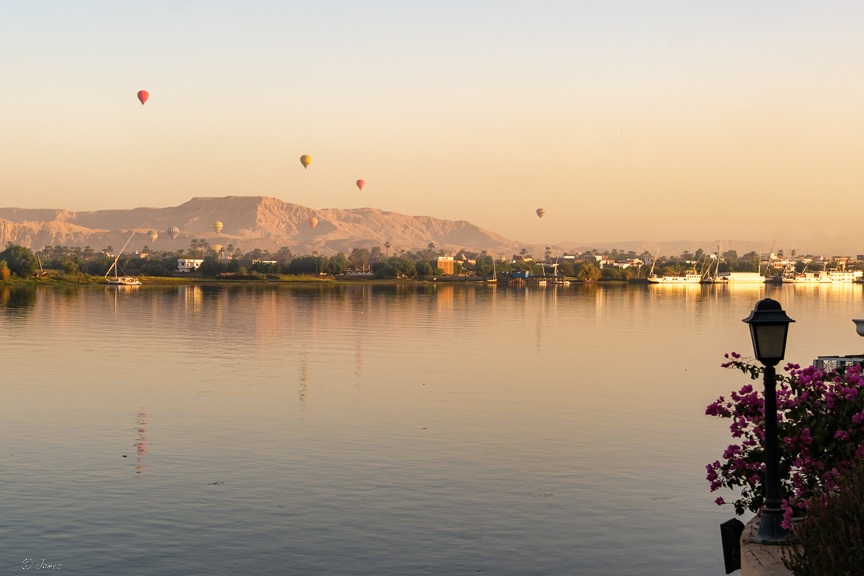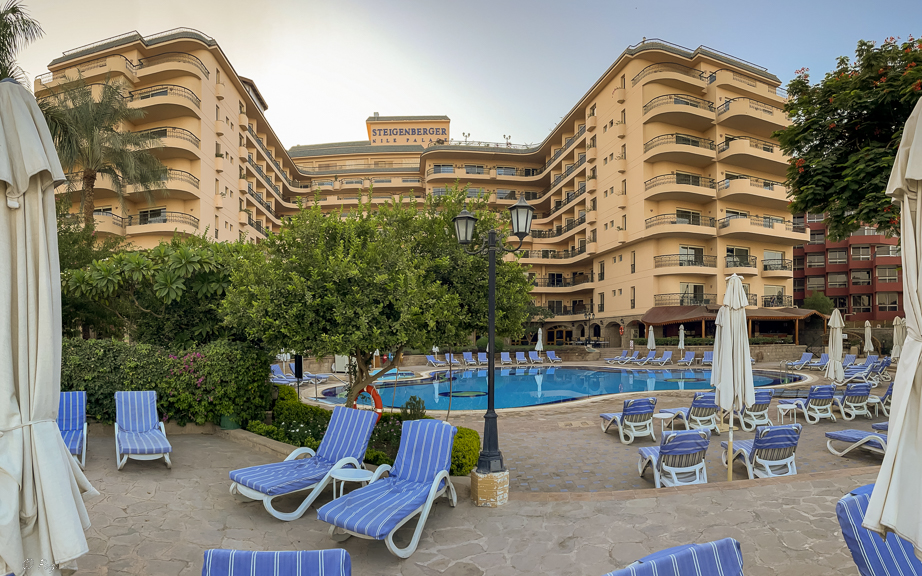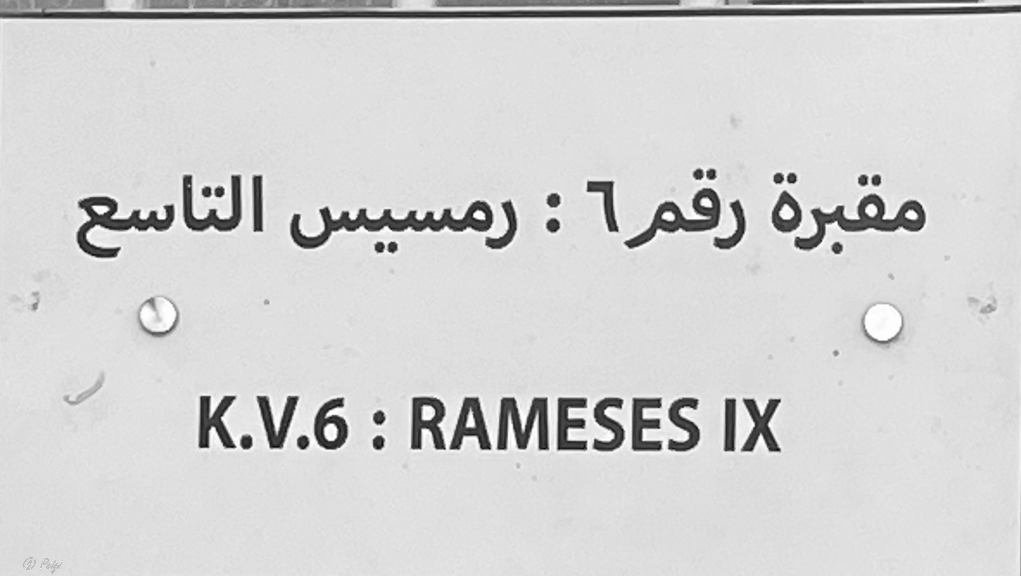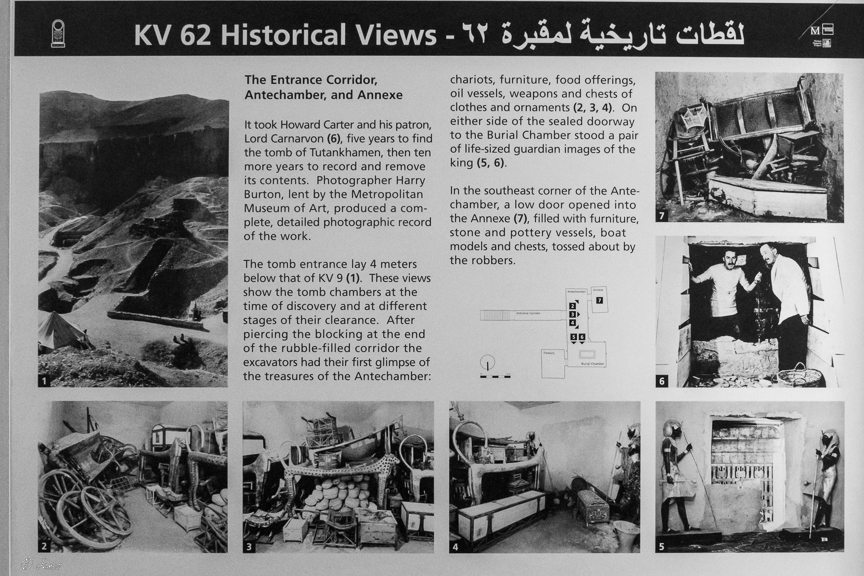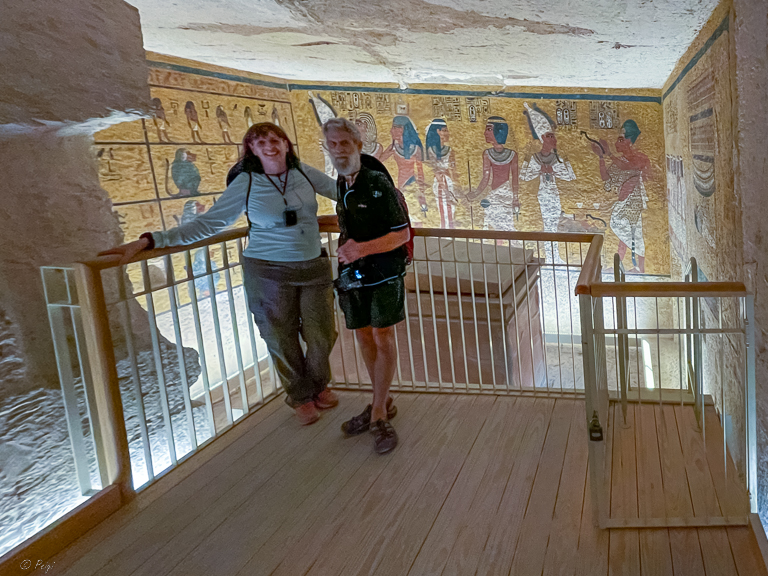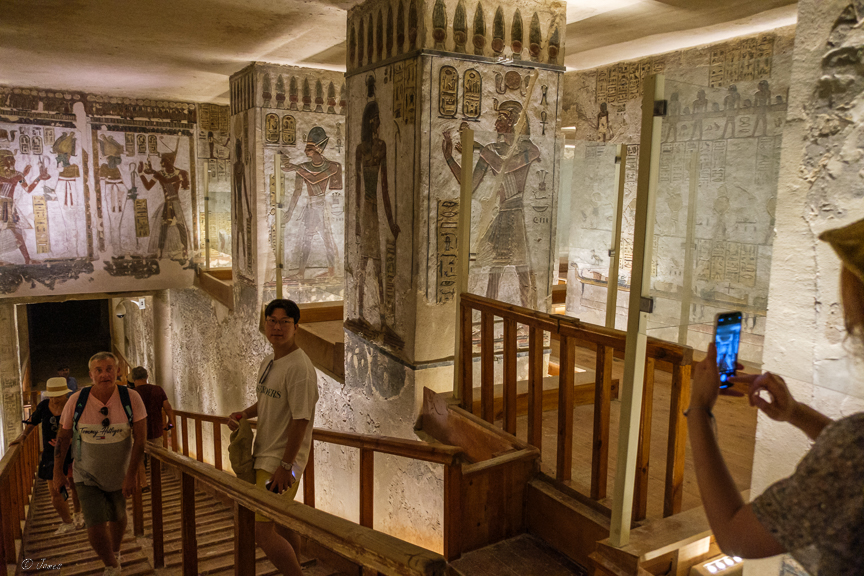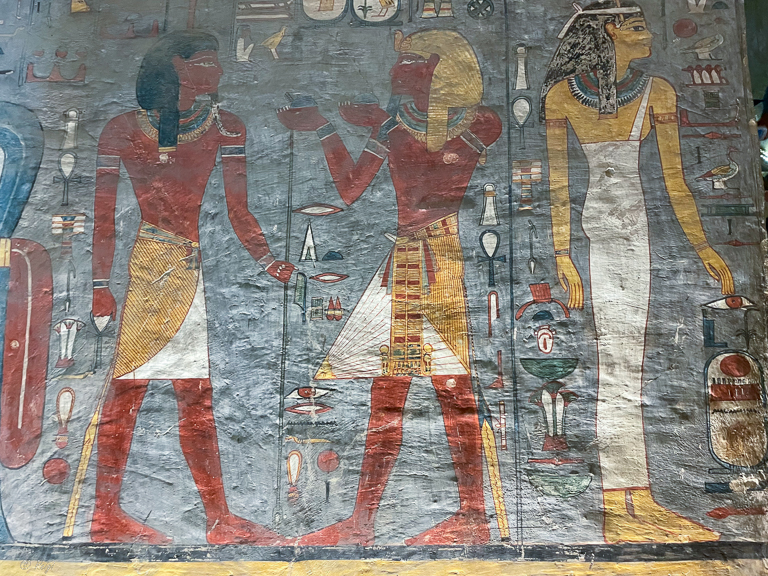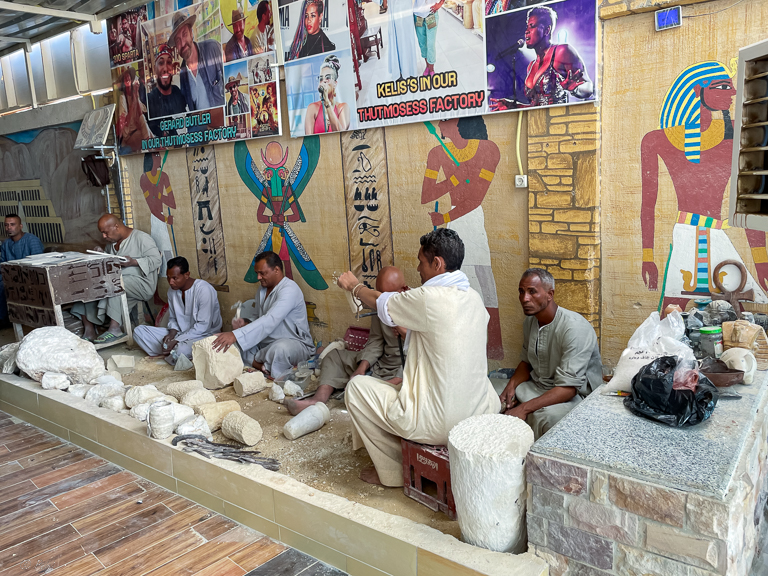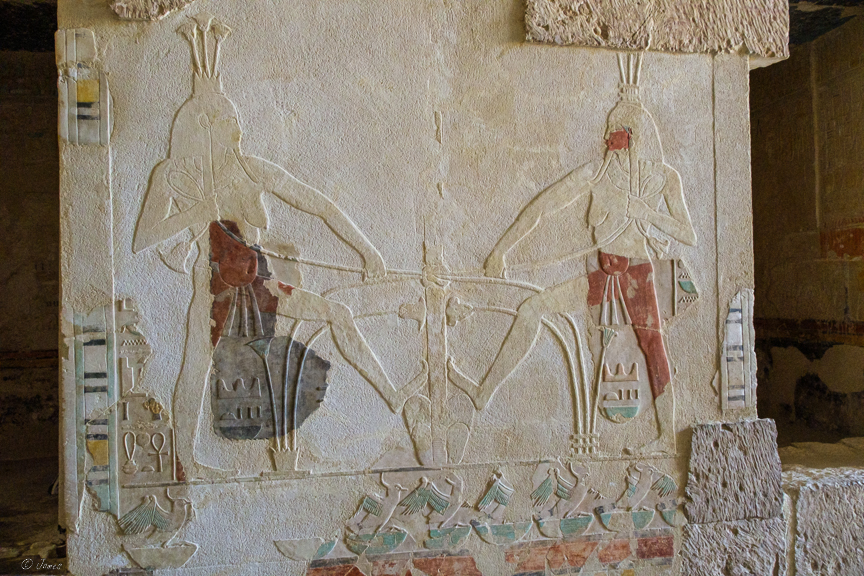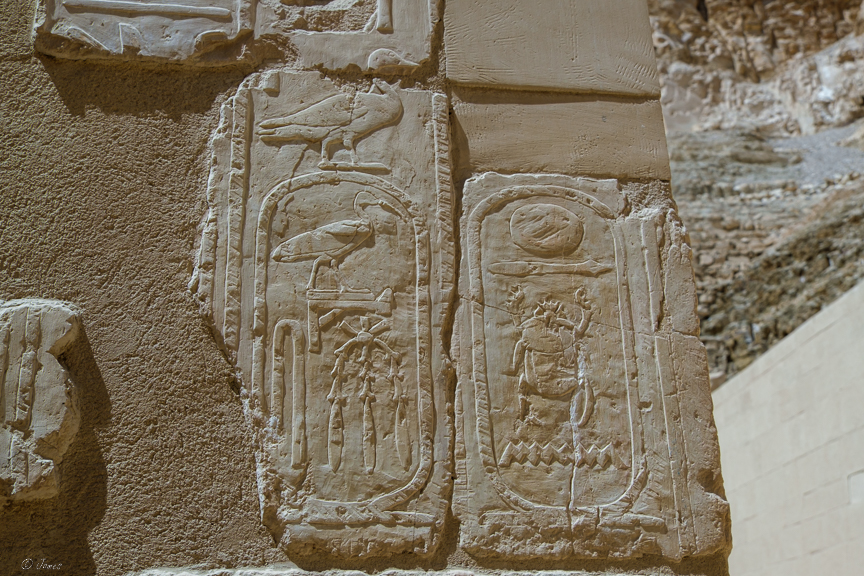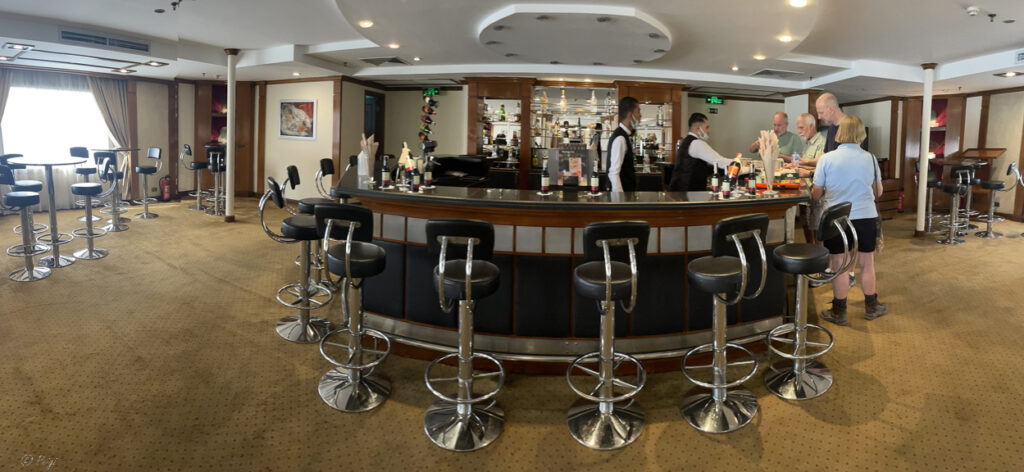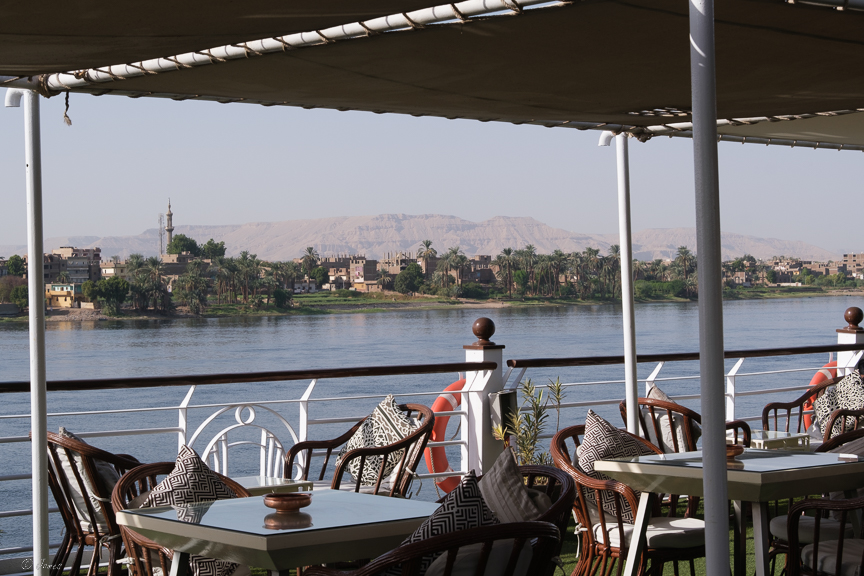A great choice for breakfast was held on the edge of the pool garden area. Several balloons were rising slowly from the west bank in the morning haze, a lovely sight.
Unlike other ancient cultures, women had stature in ancient Egypt. Wives were often portrayed in reliefs with their husbands including in the royal court. Many of the plethora of Egyptian gods were also female. However, there are even fewer ancient cultures that saw a woman rise to be the queen or head of state. In the most recent or latest period of Egyptian history—the New Kingdom period—Hatshepsut, meaning “Foremost of Noble Ladies” became the fifth pharaoh of the 18th dynasty (See comments on day 1).
After Hatshepsut died, most likely Amenhotep II, the second son of Thutmose III, along with his father in later life, defaced her monuments by chiseling out her name and images wherever he could. This was the worst thing you could do to an Egyptian. Erasing her name and image meant being doomed to no afterlife—the very thing that the Egyptians planned for while they were alive. For many years the local guides claimed this was solely the work of Thutmose III who resented the co-regency, but in recent years opinion has changed. The evidence suggests that Thutmose III, particularly early in his reign, loved his stepmother and regarded her highly. After all, Hatshepsut put him in charge of her armies. Her mummy is in the Egyptian museum. It was also important to preserve the body for the afterlife; if the body especially the face was destroyed the spirit would not be able to find the right body. Other people wanted to be buried near to the pharaoh.
It is possible that Hatshepsut—pharaoh’s daughter—is the one who drew baby Moses out of the Nile. At the latter end of Thutmose III’s life he may have encountered a rebellious Moses, and his son, Amenhotep II may well have been the pharaoh of the Exodus. Looking for someone to apportion blame to, perhaps Hatshepsut’s great legacy was dishonoured because she took pity on a Hebrew baby in the reeds of the Nile.
We bussed from the hotel to the same hills as yesterday on the West bank of Luxor, just a few kilometres further to the Valley of the Kings. We had time for only three tombs plus the tomb and mummy of Tutankhamun. Hilary was able to go into the best tomb, that of Ramses III. The valley is about 300 m long and the 63 tombs and chambers are scattered along the edges of it, varying from a small pit to the 130 rooms for the sons of Ramses II. Thutmose I was the first buried here in 1493BC and the last Ramses X in 1077BC. His tomb is richly decorated with wall paintings showing the Egyptian religion and providing the history of their beliefs and rituals, though most were robbed in the past. The work was done by the paid workers living in Deir el Medina nearby. The valley was called ‘The great and majestic necropolis of the million of years of the Pharaoh, life, strength, health’. There are at least 63 burials of 20 pharaohs and family. The area is barren in contrast to the flat green valley of the Nile below. It was very hot, but the place is well organised with electric transport from the gates to the first two entrances where there is also a cafe. Tips are expected everywhere – the car driver, guides, toilets … and we were harassed by vendors most of the time.
Tips are expected everywhere – the car driver, guides, toilets … and we were harassed by vendors most of the time. When Howard Carter discovered the boy king Tutankhamun’s tomb in 1923 it was also packed with artefacts that the king needed with him in the afterlife. Tutankhamun’s tomb (KV 62/King’s Valley no. 62) was very small compared to other kings who reigned much longer. The walls were less ornate than the others; speculation is that the High Priest swapped Tutankhamen’s tomb with his, as he wanted the more ornate one. Tut has a broken back and legs, and a hole in the back of his head. Murdered? Fallen? Disease? Nonetheless it took Carter almost 10 years to catalogue all the items in this most famous of all tombs. One of the unfortunate finds in the tomb were two mummified fetuses. DNA tests confirmed these were the stillborn daughters of Tutankhamun and his wife Ankhesenamun.
When Howard Carter discovered the boy king Tutankhamun’s tomb in 1923 it was also packed with artefacts that the king needed with him in the afterlife. Tutankhamun’s tomb (KV 62/King’s Valley no. 62) was very small compared to other kings who reigned much longer. The walls were less ornate than the others; speculation is that the High Priest swapped Tutankhamen’s tomb with his, as he wanted the more ornate one. Tut has a broken back and legs, and a hole in the back of his head. Murdered? Fallen? Disease? Nonetheless it took Carter almost 10 years to catalogue all the items in this most famous of all tombs. One of the unfortunate finds in the tomb were two mummified fetuses. DNA tests confirmed these were the stillborn daughters of Tutankhamun and his wife Ankhesenamun.
We stopped for a while at an alabaster factory where people bought quite a lot. Hillary was interested in a beautiful small vase but the painful process of waiting for the boss and then bartering put her off buying it.
The three mortuary temples at Deir el Bahari were built over a period, initially Mentuhotep II in the 11th dynasty (2061-2010 BC). Hatshepsut was next in about 1460’s BC in the 18th Dynasty, pre-Exodus. The beautiful complex of Hatshepsut’s temple has three colonnaded terraces, the first example of ‘classical architecture’ in Egyptian history, but the terraces no longer have the original lush gardens. Her protégée Thutmose III was last.
We stopped briefly to see the Colossii of Memnon (Amenhotep III), two huge statues of the many he made of himself, in a small area with bits and pieces of the temple that used to be here. They are 18 m high standing on 4 m high plinths, each weighing 650 tons Amenhotep III reigned in the 1360’sBC 18th dynasty. His name means ‘Amun is satisfied’. The function of the Colossi was to guard the entrance to his temple. Carved into the front throne alongside his legs are representations of Tiye his wife and his mother. They are constructed from sandstone transported here from el-Gabel el Ahmar near Cairo 675 km away. It was one of the largest temples ever built. It is believed the temple collapsed because of earthquakes or due to the soft ground prone to flooding.
Finally, we bussed back to the Nile boarding a well built and well run four-deck ship owned by Swedish Movenpick. The cabins are small but have all that’s needed. The cabins have large windows from which to watch the world go by, the top deck has a very small pool and a large, shaded area for the bar, an excellent place to watch the world go by in the evening while sailing.


